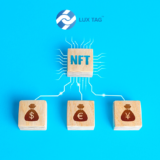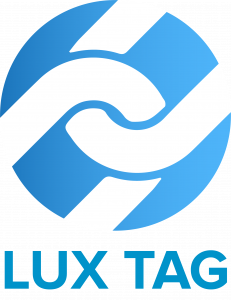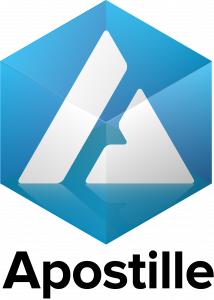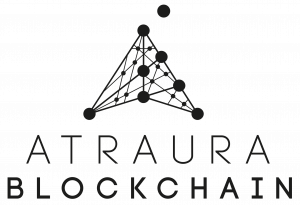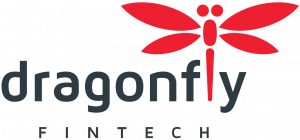Qchain – EQC & XQC ICO For Blockchain Marketing Ad Analytics?

Qchain provides marketing and advertising on the blockchain. Find out how it works today in our review.
First appeared on bitoinexchangeguide
What Is Qchain?
Qchain, found online at Qchain.co, is a marketing and advertising platform built on blockchain technology. The platform’s crowdsale is underway from November through to December 5.
The goal of Qchain is to build a suite of open and transparent applications that provide decentralized, secure solutions for digital advertisers, in-house marketers, content publishers, and everyday internet users.
The flagship application for the platform is a direct buy marketplace that makes it easy and simple for advertisers and publishers to conduct transactions in native advertising units.
Qchain is built on NEM and Ethereum blockchain technology. The developers want to leverage the strengths of both NEM and Ethereum to achieve their goal of becoming a secure, reliable, scalable, and decentralized marketing platform.
How Does Qchain Work?
There are three main agents interacting within the Qchain advertising ecosystem, including advertisers, publishers, and hosts. Within the Qchain ad network, hosts replace a centralized man-in-the-middle agent (like Google). Google and other centralized ad networks cannot exert singular control over the content of the ad network.
This leads to a more democratic advertising network. Nodes confirm the terms chosen and agreed upon by advertisers and publishers using distributed consensus. This unique and innovative model enables thorough decentralization across all major functions of the platform and better protects against fraud and censorship.
This system also improves scalability. Instead of relying on a centralized party for distribution and verification of content and confirmation of transactions, Qchain relies on its own network.
For the initial Qchain rollout, advertisers and publishers will connect with one another through a direct marketplace. Programmatic marketing features and services will gradually by implemented into the marketplace.
Here’s how it works for each of the three parties involved in the process:
The Advertiser
The advertiser accumulates EQC or XQC tokens for an advertising campaign. The advertiser builds the media resources and content for the campaign, then contracts with publishers to serve advertisements to users. Advertisers can choose to either be automatically matched with compatible publishers based on their ad criteria, or personally select specific contracts to enter into with publishers. The advertiser offers some amount of payment per conversion, click, impression, or action to be split between the publisher and the host.
The Publisher
The Publisher agrees to display media resources and content produced by the advertiser for a set period of time on his or her website. In exchange, the publisher receives a certain number of tokens per click, impression, or another factor. Publishers can specify criteria for advertisements they are willing to serve, including ad type, genre, content, payment range, duration of time, and more.
The Host
The Host serves as a member of a decentralized network of transaction verifiers. For a percentage of the token payment the host agrees to provide bandwidth and computing capacity. These resources are used to execute checks that verify the legitimacy of the ad activity occurring on the publisher’s website (i.e. the computer verifies that the ad is maintaining the requirements outlined in the Qchain ad contract that was agreed upon).
The Qchain Crowdsale
The Qchain crowdsale began on October 24 and is scheduled to end on December 5. There are two types of tokens, including Ethereum Qchain (EQC) and XEM Qchain (XQC) tokens. Both are used to engage in transactions and access services on the Qchain app. The EQC token will be ERC20 compliant.
There will be a fixed supply of 125 million tokens of each, for a total maximum supply of 250,000,000 tokens across both blockchains.
60% of the total supply will be sold in the crowdsale. 15% will be reserved for bounties and promotions; 10% is for a contingency reserve; and 15% is held by the founders and team to be used in the Qchain ecosystem or serve as an additional contingency cache.
Who’s Behind Qchain?
Qchain’s whitepaper describes its team as “a growing number of scrappy and resourceful individuals who excel at multitasking, persevering under pressure, and coming through on tight deadlines.”
Key members of the team include Wally Xie (Co-Founder and CEO), Roy Zhao (Co-Founder and CTO), Angela Wang (Chief Content Officer), James Rathmell (VP, Corporation Development), and Shiva Kandaswami (Full Stack Developer).
CEO Wally Xie has a background in digital advertising, data analysis, and software development. He has previously worked at the prominent Chicago startup Sprout Social. He also worked as a researcher at the United States National Institutes of Health.
Qchain Co. is based in Irvine, California.
Qchain Conclusion
Qchain is a digital advertising platform that aims to remove the middleman from the advertising ecosystem. Today, middlemen like Google take a large cut while also censoring advertising content. Qchain envisions a different future where publishers and advertisers interact with each other while using hosts to verify advertising content. These hosts offer their computing power in exchange for a cut of the profits. The hosts act as a middleman, replacing Google and other centralized advertising platforms.
The Qchain token sale is underway throughout October, November, and December (ending on December 5). You can learn more by visiting Qchain.co online today.


